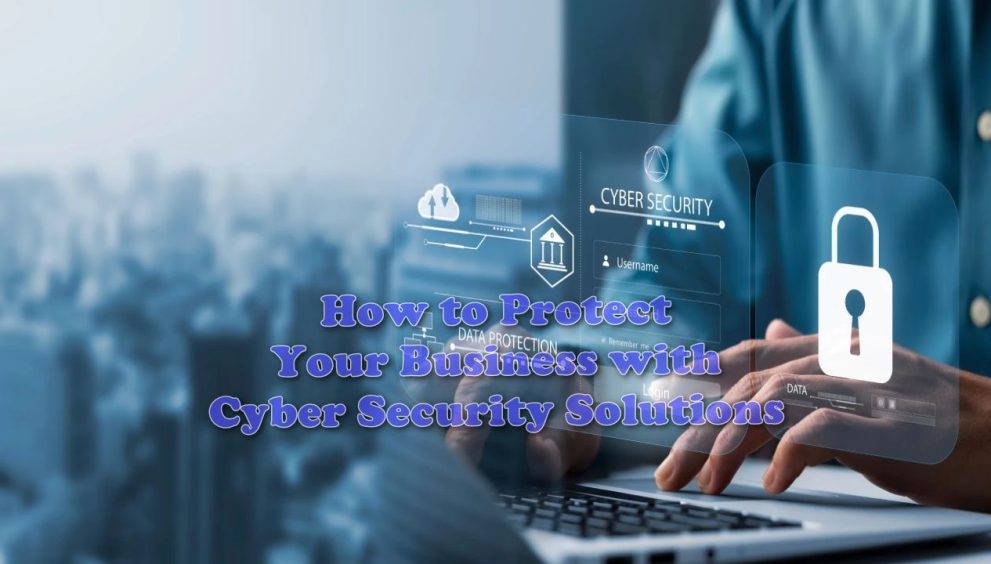Protect Data Smartly: IT Business Solutions for Employee Security

INTRODUCTION
Nowadays, digital processes and businesses depend on fast technology to store, share, and safeguard information easily. But with the very easy advancements come significant risks, data breaches, with many phishing attacks, insider security threats, and human errors in the process. Securing the highly sensitive company data is no longer just about securing its systems; it’s about ensuring all employee security, too. This is where IT business solutions step in as a vital shield.
In the past, most organizations depended very heavily on physical locks, paper files, and basic antivirus programs to safeguard data. But those plans worked then, and today’s interconnected world demands with very smarter and more successful approaches. Now, modern IT business solutions combine advanced cybersecurity tools, cloud protection, and employee-focused solutions with very strong safety measures to keep companies strongly.
This article explores the what, how, and why of protecting data through IT business solutions, looking at past practices, present-day strategies, and the future direction of employee security.
IT Business Solutions: Why Employee Security and Data Protection Go Hand in Hand
Every employee of a company is connected with business data daily through emails, shared files, customer information, and all internal communication platforms. Whereas if even one worker’s account is compromised, then the entire organization becomes on weak point. Employee security is not just about physical safety in the workplace; it extends to digital safety in an all-online environment.
When businesses secure employees with the right IT business solutions, they:
- Preventing unofficial access to the very sensitive data.
- Train the staff to easily identify threats like phishing and social engineering.
- Decrease the stress for employees by providing secure systems that are easy to use.
- Build much trust with customers and stakeholders who expect responsible data handling.
Without employee security, companies risk data leaks and much financial loss, with the reputational damage that may take years to repair.
The Past: How Data Protection Worked Before
In earlier decades, businesses managed information primarily in physical formats. All records of paper records were locked in cabinets, and easy access was limited to trusted employees. As computers came into the workplace, security revolved around:
- Passwords: Basic login credentials were the firstly defense.
- Antivirus Software: Used to block malware, but often a limited-scope process.
- Firewalls: More Essential for protecting networks from all external intrusions.
Which methods were effective when cyber threats were less advanced? However, employees often lacked training, making them very exposed to scams or poor password habits. The process of Data breaches was less common, but when they happened, all companies often discovered them too late.
Losses in the past:
- Limited awareness of all digital risks.
- Minimal focus on employee cybersecurity training.
- Data recovery was slow and costly.
Benefits in the past:
- Fewer online threats compared to today.
- Simpler systems to manage.
- Easier to monitor local files and devices.
The Present: How IT Business Solutions Protect Data Today
Today’s modern businesses face more advanced cyber threats and problems, from ransomware attacks to data leaks. All employees now work remotely, using multiple advanced and easy devices, and often handle more difficult information on cloud-based platforms. This creates both more opportunities and heavy challenges.
Key IT Business Solutions for Employee Security Today:
- Multi-Factor Authentication (MFA): The requirement process for employees to verify more identity using more than just a security password.
- Cloud Security Tools: Protecting the data stored, processed, and shared through all platforms, like Google Workspace or Microsoft 365.
- Endpoint Protection: The Security of all laptops, smartphones, and tablet devices that employees use for work.
- Employee Training Programs: Regularly based awareness sessions teach all staff how to detect suspicious and harmful activity.
- Data Encryption: He converts very sensitive information into unreadable codes, making stolen data useless.
- Zero Trust Models: The process of accessing is granted based on strict identity verification rather than much assumed trust.
Present-day benefits:
- The strongest protection method against advanced cyberattacks.
- Enhancing the employee confidence in using digital tools.
- Faster data recovery through cloud backups.
Present-day losses:
- High costs of implementing advanced IT business solutions.
- Over-reliance on technology without continuous training.
- Complex systems may overwhelm employees if not managed well.
How It Works: The Connection Between IT Business Solutions and Employee Security
The process foundation of smart data protection lies in combining fast technology with human awareness. IT business solutions provide the soft infrastructure, but employees are the first line of defense.
Here’s how it works:
- Detection: Many advanced monitoring tools can more quickly identify unusual activities.
- Prevention: The process of Firewalls, MFA, and encryption can easily prevent unauthorized access.
- Response: Incident response systems ensure more rapid action in case of a breach.
- Education: Employees receive constant training to stay more alert and more proactive.
When all four steps are connected with the business process, they can prevent the majority of attacks before they cause damage.
The Future: What’s Next for Employee Security and Data Protection?
The future process of IT business solutions will heavily depend on automation, artificial intelligence (AI), and predictive analytics. These very fast technologies will not only detect threats but also predict them before they happen.
Trends:
- AI-Driven Security: The Automated systems process that learn from data patterns and predicts possible breaches.
- Biometric Authentication: The processes of Fingerprints, facial identification, and voice ID are replacing traditional passwords.
- Remote Work Protection: Stronger security frameworks for remote employees.
- Employee-Centric Designs: The system is built to simplify use, so all employees stay secure without feeling burdened.
- Global Regulations: Much Stricter laws requiring businesses to accept higher levels of cybersecurity submission.
Future benefits:
- The strongest defense against evolving cyber threats.
- Less dependence on human problems as AI takes charge of monitoring.
- The smarter method, employee-friendly systems that balance security with productivity.
Future challenges:
- Rising costs for businesses to stay more updated.
- More potential misuse of biometric data.
- Over-dependence on automated systems without human mistakes.
Why Protecting Data Smartly Matters for Every Business
The journey process, which starts from the past to the present to the future, shows one truth: data protection is always evolving. Businesses that more easily succeed in smarter IT business solutions are more likely to protect employees, retain much customer trust, and grow very confidently in the digital economy.
Without these solutions, the risks are far too more: financial loss, with much reputational damage, and even more legal consequences. Those employees who feel unsafe in handling digital data may become less productive, while those employees working under strong IT security systems feel empowered and very confident.
Conclusion
The Solution of protecting process employee security through IT business solutions is no longer optional; it’s a necessity. In the past, data was protected through physical measures and basic tools. Today, businesses employ easily picked advanced cybersecurity strategies like MFA, encryption, and training programs. Tomorrow, AI and biometric systems processing will dominate the landscape, making all security even smarter and more predictive.
Solution of the what, how, and why is clear: The reliable method of IT business solutions is the key to protecting both business data and employee security. By learning from the past, applying the very best practices of today, and best preparing for future developments, organizations can create a safe all-digital environment where employees thrive and businesses grow.
FOR MORE INFORMATION: Bloggingshub.com











